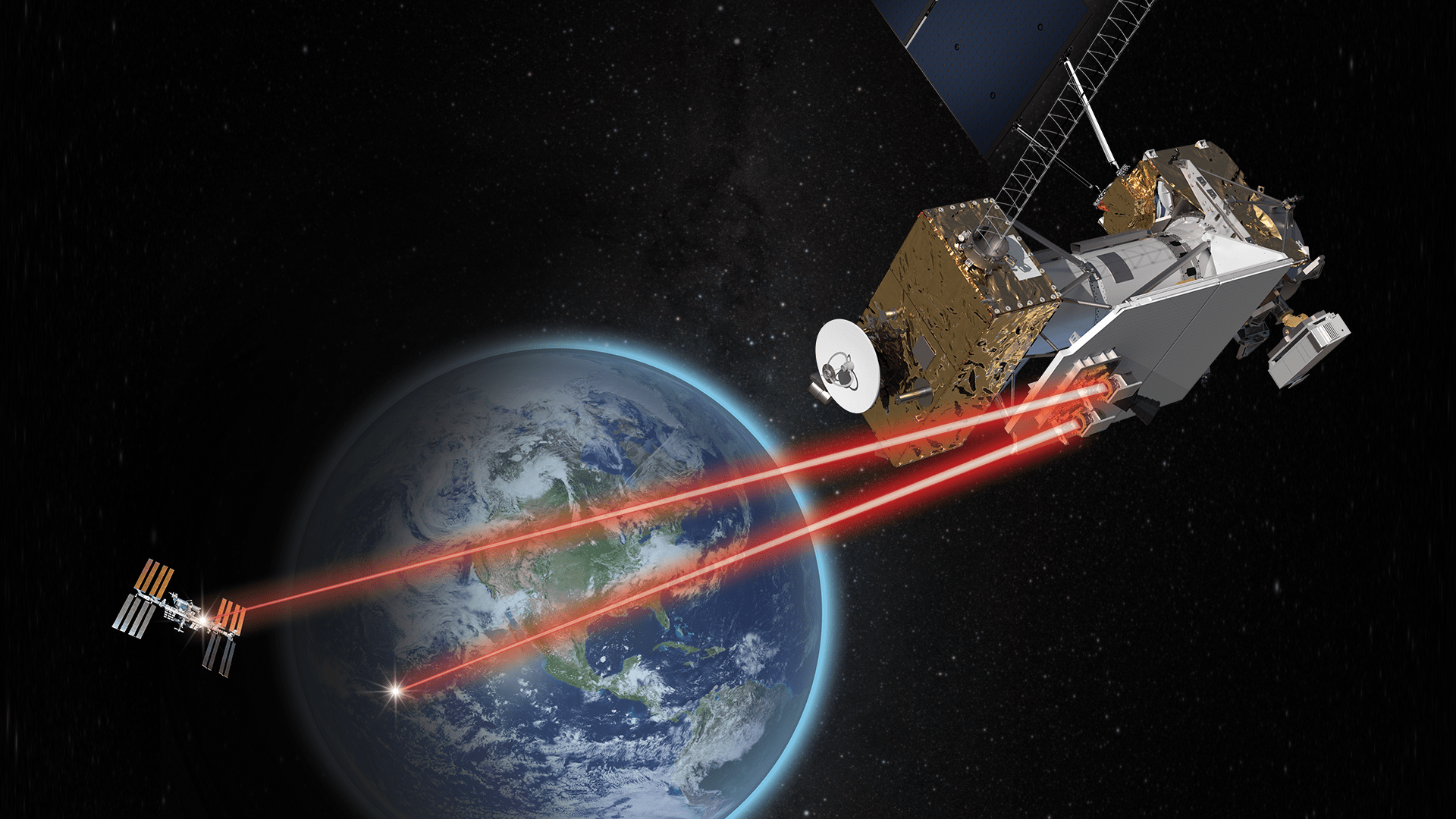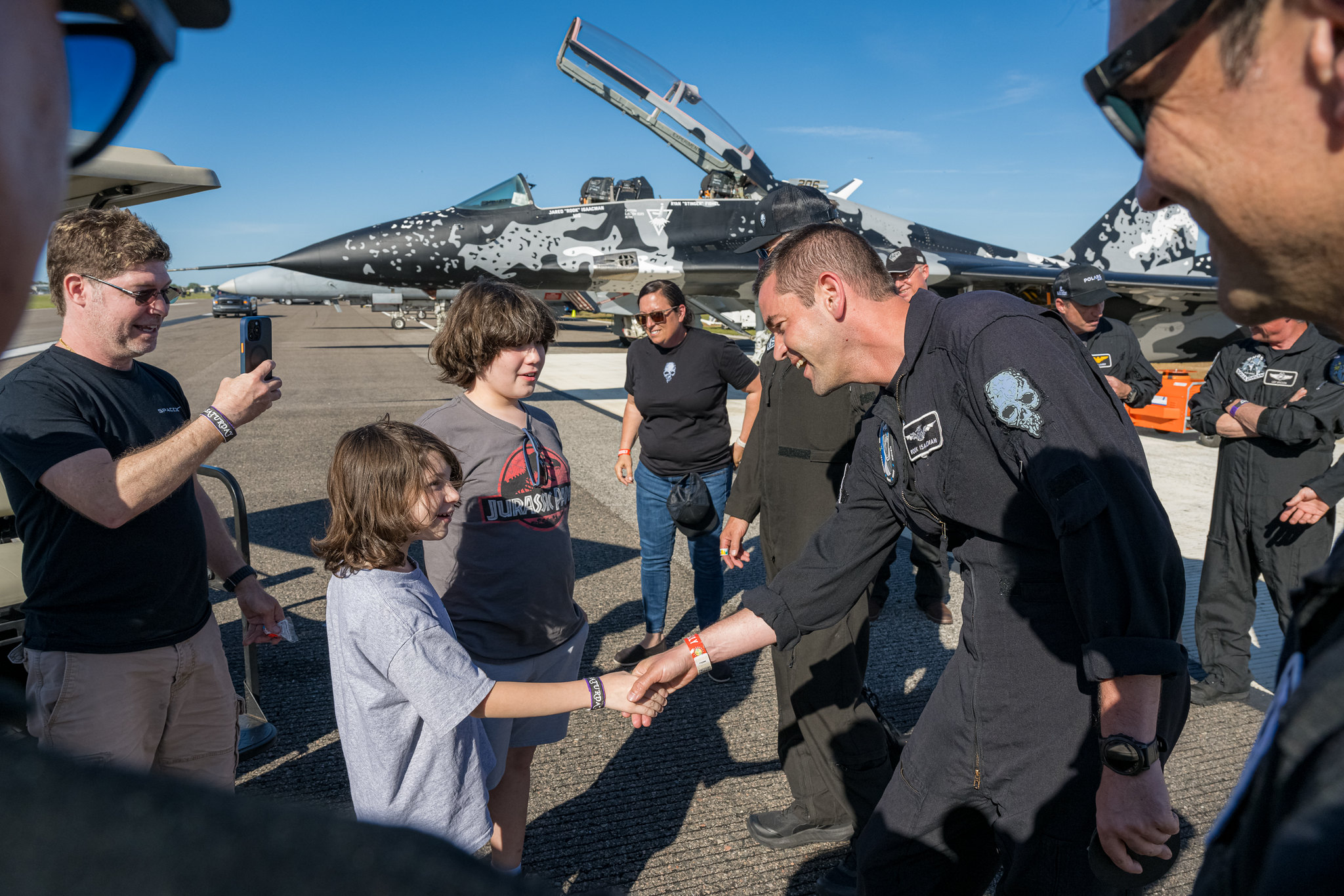How NASA's new laser communications mission will work in space
The goal is to speed up solar system communications.
A "data hunger" in space is driving the launch of a new laser communications mission, a NASA official told Space.com.
The Laser Communications Relay Demonstration will launch on the United States Space Force Space Test Program 3 (STP-3) mission no earlier than Dec. 5 at 4:04 a.m. EST (0904 GMT). You can watch the rocket launch Sunday online courtesy of United Launch Alliance, which is flying the mission on an Atlas V rocket.
"This will be our first foray into understanding, what does it mean to use lasers to communicate and really connect directly to Earth and space users?" Jason Mitchell, Director of SCaN Advanced Communications & Navigation Technology Division at NASA, told Space.com in a recent video interview.
Related: Dial-up space communications system gets 'high-speed' upgrade

LCRD will help NASA learn about possible effects to manage, ranging from atmospheric turbulence to cloud deflection, Mitchell noted. The timing is crucial as NASA and its international partners expand its exploration focus over the coming decades.
Newly announced private space stations will only expand the need for fast information flowing to and from Earth. Meanwhile, astronauts on the moon and a sample return mission on Mars could benefit from faster communications speeds 10 to 100 times faster than current-day radio.
LCRD and forthcoming laser demonstrations a little further from Earth, Mitchell said, will help figure out how to operate lasers from a hub such as a moon base. In turn, he said, the "learning experience at the moon [will show] how we would look to operate this at Mars — as well as in any other location, really, in space where you have a central spot that you really want to collect a lot of data from."
LCRD will operate from geosynchronous orbit at 22,236 miles (35,786 kilometers) to test out laser communications for at least two years. The demonstration is meant to demonstrate the sustainability of longer space missions after several brief, successful attempts to try laser comms in space.
Get the Space.com Newsletter
Breaking space news, the latest updates on rocket launches, skywatching events and more!
Making sure the mission outlasted the stresses of launch and space radiation for years, instead of a few weeks of months, was top of mind during the design process, Mitchell said.
"We've invested for quite a few years to bring this sort of science fiction capability into regular operational use. And really, it's just been making sure that we can get all that technology packaged in a way that will survive in space. That's been the big challenge, and that's what we've been focused on."
There are more lasers launching soon, too. The Artemis 2 crewed moon-orbiting mission for 2024, is expected to test an Orion spacecraft optical communications system to send ultra-high-definition video feedback to Earth.
Also, the first year of the Psyche mission (targeting a metal asteroid of the same name) will include a test of the Deep Space Optical Communications (DSOC) payload, which will help investigators learn how to precisely direct laser communications from deep space.
"As the trajectory goes out, we'll be doing all kinds of experiments with the DSOC to try and understand how much data can we get," Mitchell said of Psyche. Eventually, he added, the investigators will learn how far the spacecraft will navigate before data flow slows, and controllers need to switch to "literally counting individual photons with these ultra sensitive detectors on the ground."
Besides the need for speed, NASA says the switch to laser will solve another growing space problem: frequency overcrowding. As satellite megaconstellations grow in numbers and commercial space launches increase, radiofrequency spectrum is becoming harder to get. It's becoming so difficult that companies often file regulatory challenges concerning each other's spectrum.
Follow Elizabeth Howell on Twitter @howellspace. Follow us on Twitter @Spacedotcom and on Facebook.
Join our Space Forums to keep talking space on the latest missions, night sky and more! And if you have a news tip, correction or comment, let us know at: community@space.com.

Elizabeth Howell (she/her), Ph.D., was a staff writer in the spaceflight channel between 2022 and 2024 specializing in Canadian space news. She was contributing writer for Space.com for 10 years from 2012 to 2024. Elizabeth's reporting includes multiple exclusives with the White House, leading world coverage about a lost-and-found space tomato on the International Space Station, witnessing five human spaceflight launches on two continents, flying parabolic, working inside a spacesuit, and participating in a simulated Mars mission. Her latest book, "Why Am I Taller?" (ECW Press, 2022) is co-written with astronaut Dave Williams.
